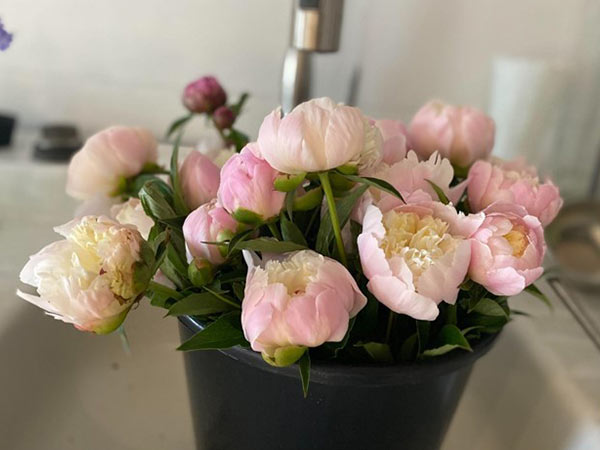It’s the season for peonies—time to watch blooms unfold and enjoy their beauty and fragrance in the garden or indoor floral arrangements. Peonies do not disappoint. In fact, few flowers compare to peonies. Their sweet fragrance evokes a sense of yesteryear—perhaps fond memories of a grandparent’s garden!
But growing peonies takes years of patience. I’ll say more about patience later. For now, let me offer a few helpful tips on getting started.
Peonies need good soil and plenty of light, so find a spot in your garden with well-drained soil and a daily dose of at least 8 hours of uninterrupted sunlight. The condition of the soil is critical because soil is the foundation for your plants and their nutritional source. Amend well-drained soil with a heap of compost to provide the nutrients peonies need to grow strong and healthy.
Newly planted bareroot peonies will need water on the hottest days of the season until they become established, and that’s about several months. Of course, if your garden is getting adequate rainfall, there’s no need for extra watering. Remember, each gardening zone is different, so water according to the needs of whatever you’re growing in your area.
Peonies often need staking as they start to emerge from the ground in early spring. Staking is vital, especially for mature plants. Some varieties are already rather weighty, and when a storm comes, rainwater increases the heaviness of each bloom, making them even more likely to fall over. Stake your peonies with a material strong enough to hold up the stems and blooms. In my garden here at the farm, I use fancy metal fencing that’s sold in individual sections. In the field, I use metal stakes and twine.

Okay, now let’s talk about patience. After planting a bareroot peony, you’ll need to wait three years before allowing its flowers to bloom. Yes, three years! I know you’re anxious to see blooms and to harvest them for bouquets but be patient and wait. During the first couple of years, remove any buds that might appear on the stems. This prevents energy from going to blooms, sending it instead back down the stems to the plant itself for root development. This is the best way to ensure that your peony has a healthy, bountiful future.
Patience pays off but be aware that when your peonies finally produce the beautiful blooms you’ve longed to see, you have only a few short weeks for harvest.
Peonies are one of the most sought-after flowers of the season. If you’re a flower farmer like me, you’re likely to receive customer requests for more—so, you’ll want to add more varieties each year.

In a future blog, I’ll share tips on how to harvest peonies and keep them looking fresh longer in your floral arrangements.
Happy Gardening!
Pamela Anthony
Beehind Thyme Farm & Garden

